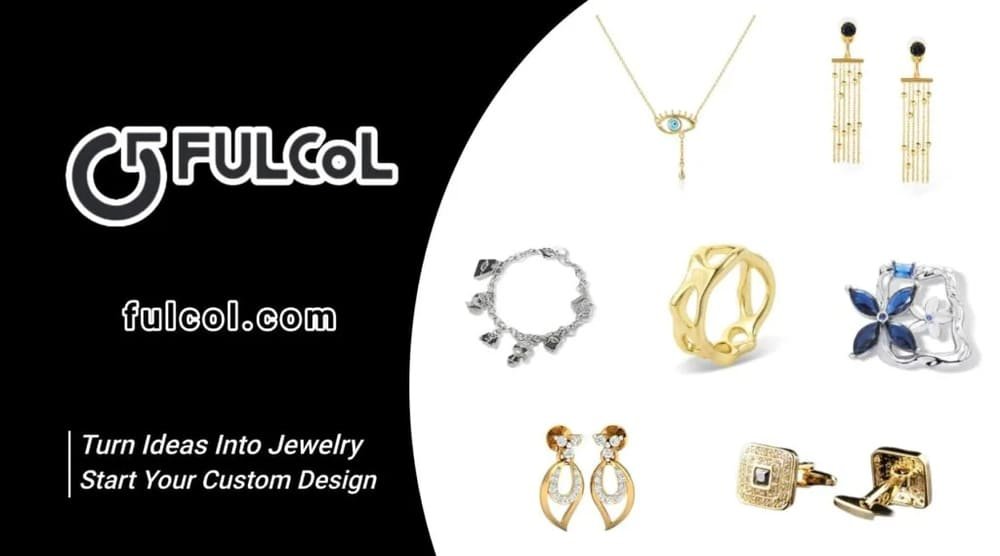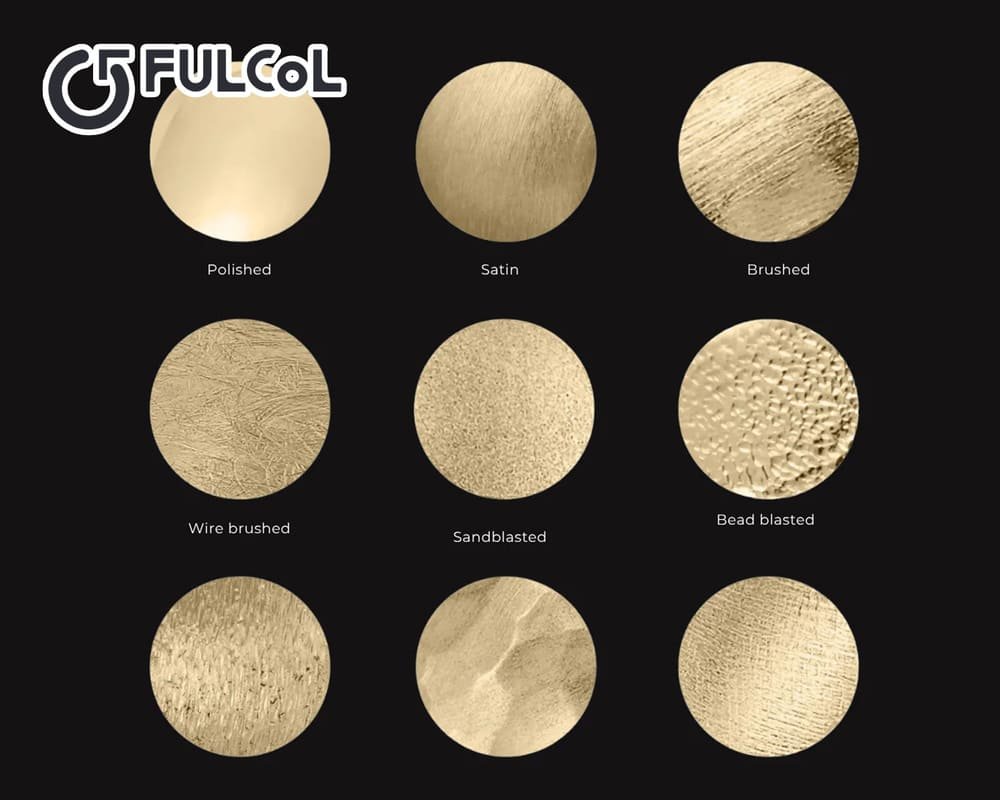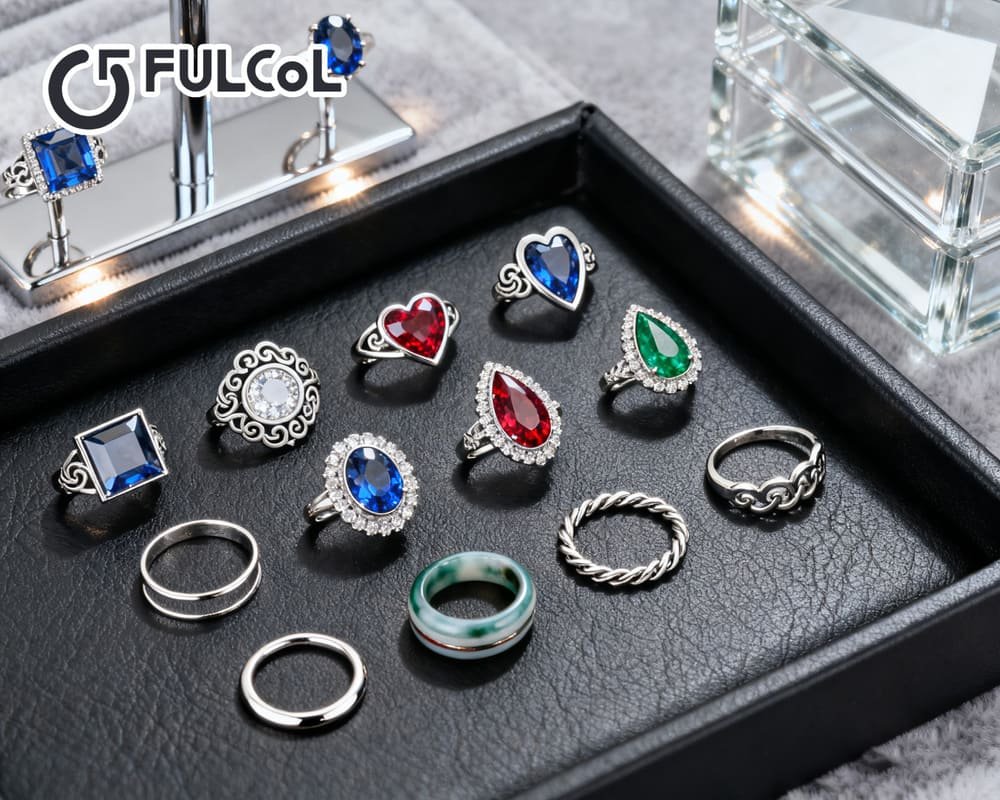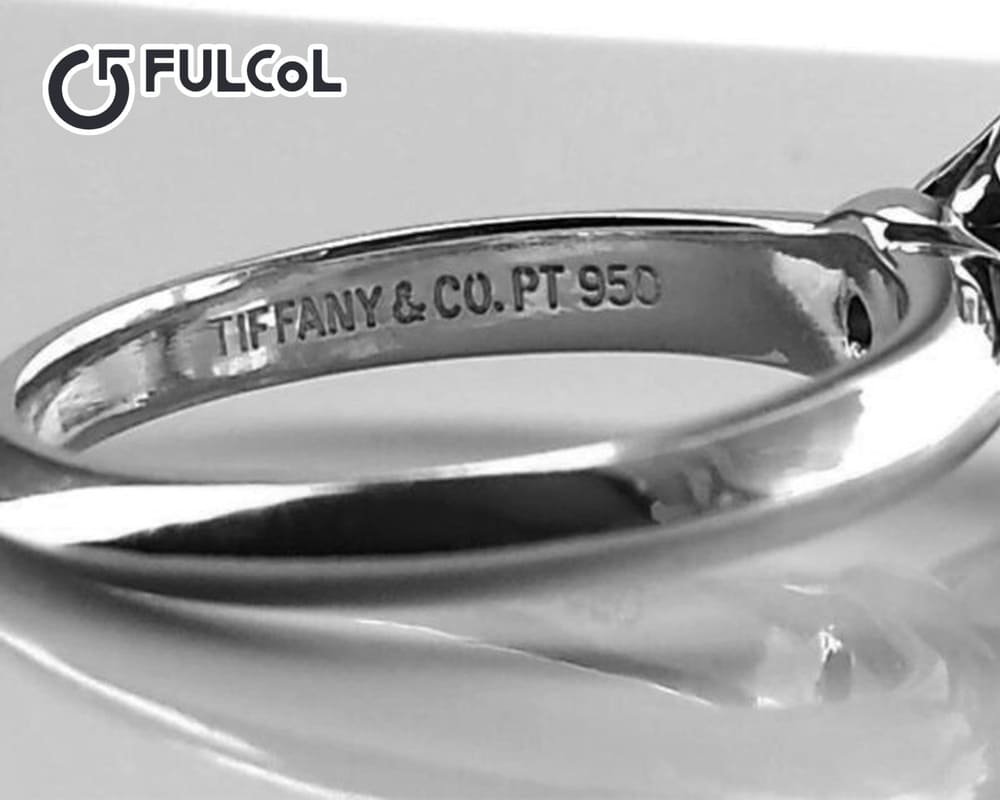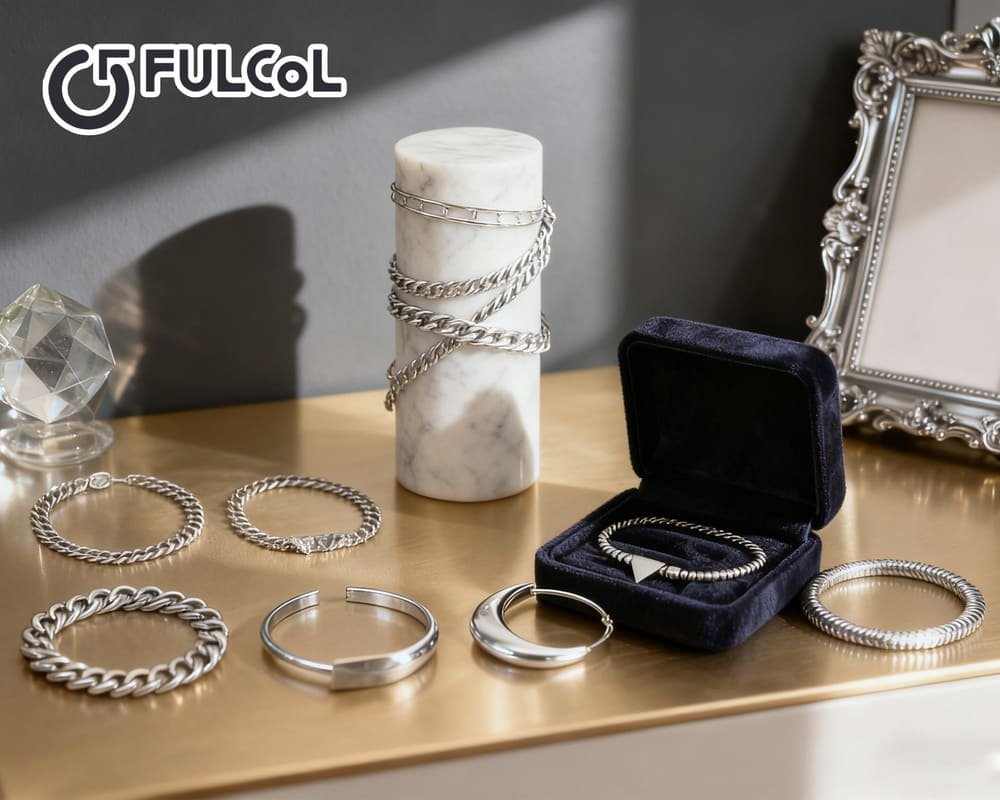Table of contents
The Fundamentals of Brass Jewelry Manufacturing
Brass Alloy Composition and Material Properties
Brass is an alloy composed of copper and zinc, and its properties vary depending on the ratio of these metals. Generally, jewelry-grade brass has a higher copper content to ensure good ductility and workability, making it easier to craft intricate patterns and presenting a natural golden hue after polishing. Brass with higher copper content is more flexible, suitable for fine shapes, while increased zinc content enhances hardness and wear resistance, improving durability.
Reliable brass jewelry manufacturers prioritize sourcing brass that meets international quality standards, ensuring consistency in each batch and providing a solid foundation for subsequent polishing and surface treatments.
Key Steps in Brass Jewelry Manufacturing
- Design Stage: Use CAD or 3D printing software to achieve precise designs, including complex textures and small components.
- Casting Stage: Common methods include lost-wax casting or sand casting, transforming the design into a tangible brass piece. Casting quality directly affects surface smoothness and the difficulty of polishing.
- Grinding Stage: Use graded sandpaper or abrasives to remove casting burrs and uneven surfaces, providing a uniform base for polishing.
- Polishing Stage: Utilize mechanical or hand polishing to create a smooth surface and even gloss, preparing for plating or protective coatings.
- Surface Treatment Stage: Depending on the design, apply gold plating, silver plating, or clear protective coatings to enhance aesthetics and prevent oxidation.
- Inspection Stage: Each piece undergoes dimensional, surface quality, and gloss inspections to ensure it meets quality standards.
Fulcol implements strict quality control at each stage, including casting precision, surface uniformity, and alloy composition monitoring, ensuring every piece reaches optimal condition before polishing. Precision manufacturing is essential for high-quality polishing.
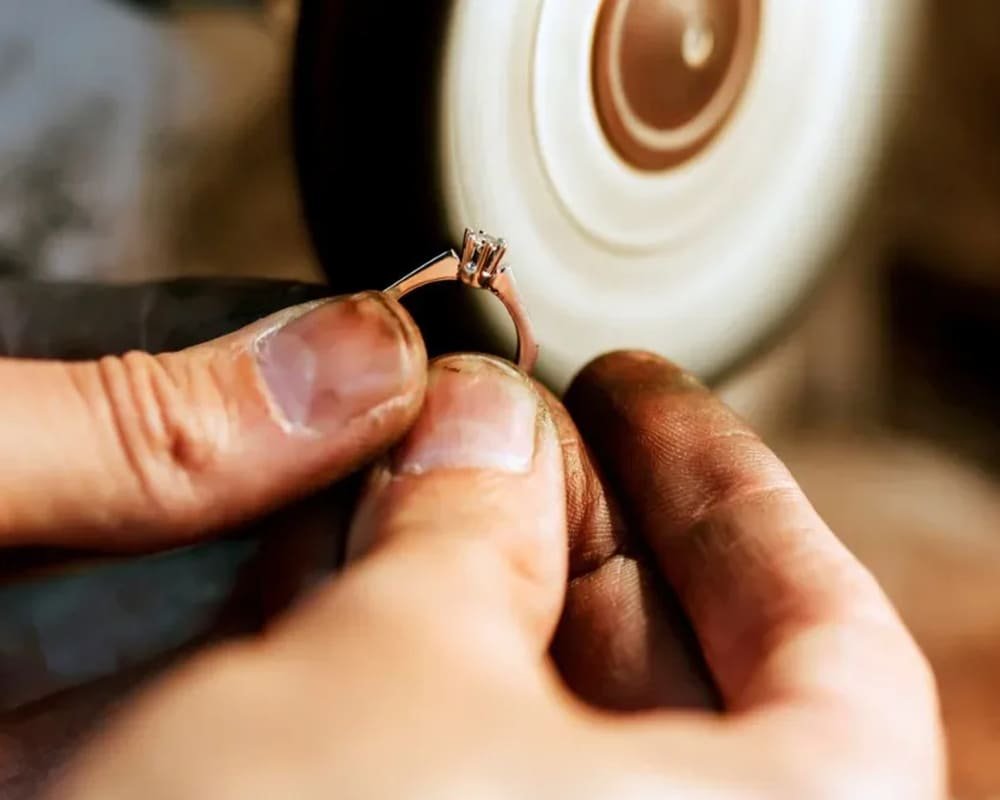
The Role of Polishing in Brass Jewelry Manufacturing
Functions and Significance of Polishing
Polishing goes beyond aesthetics; it plays a critical role in the manufacturing process:
- Remove Burrs and Minor Imperfections: Residual burrs after casting or grinding can affect comfort and appearance. Polishing eliminates these completely.
- Enhance Surface Gloss: Polishing accentuates the unique golden hue of brass, making the jewelry visually appealing.
- Improve Tactile Feel: A smooth surface provides a comfortable wearing experience and adds value to the jewelry.
Polishing in Relation to Other Processes
High-quality polishing must integrate closely with grinding, plating, and cleaning:
- The grinding stage provides a uniform base, facilitating smooth polishing.
- Cleaning after polishing ensures even gloss.
- Polishing before plating ensures the coating adheres firmly and extends jewelry lifespan.
Fulcol’s Multi-Stage Polishing Process
For custom brass jewelry, Fulcol uses a multi-stage polishing approach:
- Rough Polishing: Quickly removes major surface irregularities, forming an initial smooth surface.
- Intermediate Polishing: Refines the surface, eliminating minor scratches and improving smoothness.
- Fine Polishing: Hand or precision machine polishing achieves a mirror finish and high gloss.
Each stage is standardized and quality-controlled to ensure batch consistency and product stability.
Professional Tools and Techniques Used in Brass Jewelry Polishing
Key Equipment
- Tumbling Polishing Machine: Suitable for batch polishing small components and handling complex shapes uniformly.
- Grinding Machines and Vibratory Polishers: Used for medium batch production, adjustable in pressure and angle to achieve uniform gloss.
- Ultrasonic Cleaning Machine: Removes residual abrasives and micro-dust after polishing to ensure a clean surface.
Polishing Materials
- Sandpaper and Grinding Wheels: Used in coarse-to-fine grades for stepwise surface preparation.
- Polishing Compounds: Containing fine aluminum oxide particles for precision polishing and enhancing shine.
- Wool Wheels and Microfiber Cloths: Used for hand polishing to achieve a mirror finish.
- Stainless Steel Pins and Nano-Abrasives: For treating small grooves and intricate textures.
Polishing Methods and Applications
- Hand Polishing: Flexible for small batches or intricate textured areas.
- Mechanical Polishing: Efficient for batch processing, ensuring uniform gloss.
- Electropolishing: Uses electrochemical action to remove micro-unevenness, ideal for complex custom brass jewelry.
Fulcol’s Specialty Techniques
- Nano-Level Mirror Polishing: Combines ultra-fine abrasives and high-precision equipment to achieve a mirror finish.
- Eco-Friendly Abrasives: Balances efficiency and environmental safety, reducing chemical pollution.
Tool Recommendations for Workshops and Large Manufacturers
- Small Workshops: Combine hand polishing with vibratory polishers for flexibility and efficiency.
- Large Manufacturers: Utilize tumbling machines, ultrasonic cleaners, and automated fine polishing equipment to ensure batch consistency and high output.
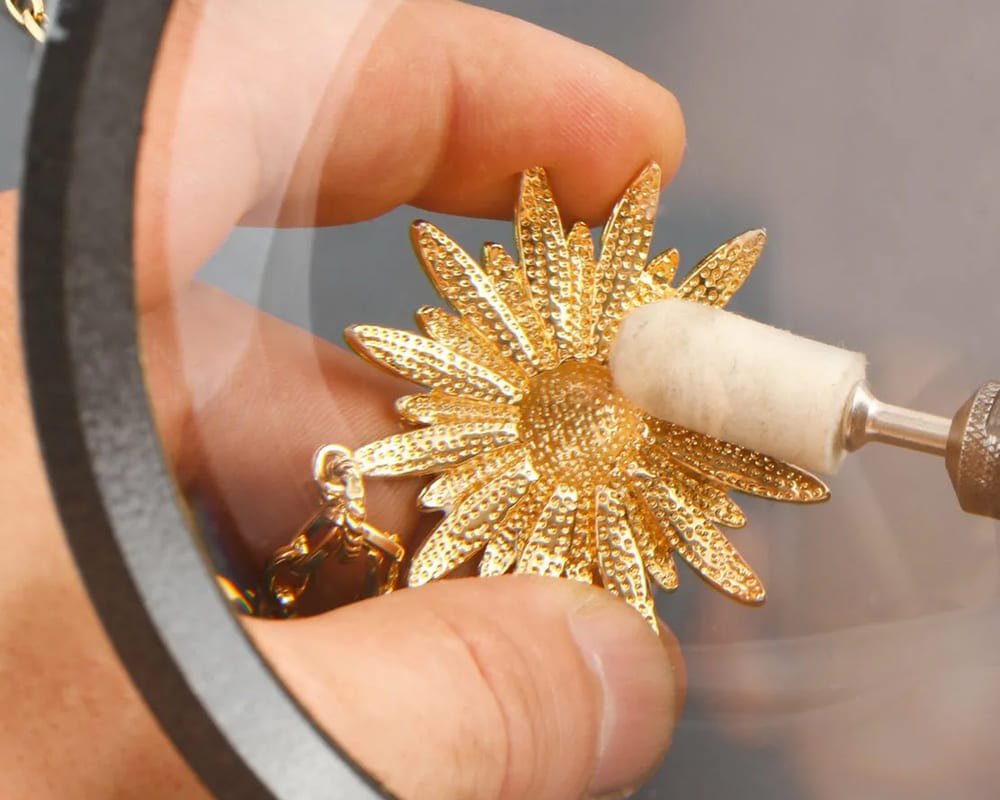
How Fulcol Leads the Industry in Brass Jewelry Finishing
Factory Strength and Team Expertise
Fulcol operates advanced equipment, skilled artisans, and strict QC procedures. Every piece undergoes multiple inspections from raw material to final shipment. The team has extensive experience in the brass jewelry manufacturer industry, capable of handling complex designs and specialized surface treatments.
Technical Advantages
- High-precision mirror polishing ensures even gloss.
- Environmentally responsible processes reduce chemical exposure, ensuring safe operations.
- Product stability meets international customer requirements.
Custom Service Capabilities
Fulcol offers a variety of surface finishes, including brushed, vintage, and mirror polishing, to meet diverse market demands. Through close communication with clients, Fulcol produces true custom brass jewelry tailored to individual design requirements.
International Certifications and Brand Trust
Fulcol’s production complies with ISO9001, ROHS, and SGS standards, guaranteeing product quality. The company has rich experience collaborating globally in the custom brass jewelry market, making it a trusted brand choice.
Quality Inspection and Control Standards in Precision Polishing
Polishing Quality Evaluation Metrics
- Glossiness: Measured using ISO 2813 standards to reflect surface reflectivity.
- Surface Roughness: Micron-level inspection ensures smoothness.
- Coating Adhesion: Tests the stability of plating under friction or wear.
Fulcol’s Inspection Procedures
- Microscopic Examination: Checks for scratches and surface flaws.
- Surface Hardness Testing: Ensures polished material retains durability.
- Color Consistency Analysis: Maintains uniform color across batches.
Ensuring Batch Consistency
Through a multi-stage standardized polishing process, strict process parameter control, and real-time inspection, Fulcol ensures that all custom brass jewelry maintains consistent gloss and quality across batches.
Common Issues and Solutions
- Scratches or uneven gloss: Adjust polishing time, angle, and pressure.
- Oxidation spots: Optimize cleaning steps or add protective coatings.
- Residual micro-burrs: Add fine polishing stage and use ultrasonic cleaning.
These measures ensure each piece achieves high visual standards and optimal user experience.
| Start Your Custom Order | Email: info@fulcol.com | Number: +86 13055603907 |
Precision polishing is a decisive factor in brass jewelry manufacturing, affecting appearance, comfort, and market value. Choosing a brass jewelry manufacturer with advanced technology and professional teams, such as Fulcol, guarantees each piece of custom brass jewelry has uniform gloss, durability, and diverse styles. Understanding every step of manufacturing and polishing allows full appreciation of the beauty of brass jewelry and the seamless integration of craftsmanship and art.
